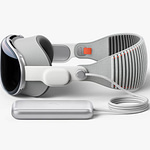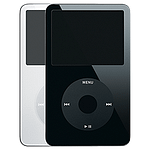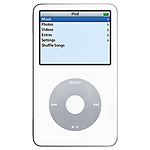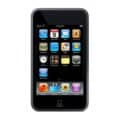- All Apple Devices
- iPod
- Apple iPod Photo
Apple iPod Photo
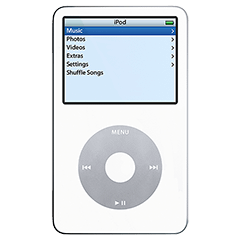


iPod Photo
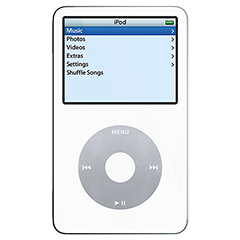
Product Brand: Apple
3
Pros
- Large, high-resolution colour screen for viewing photos and album art
- Ability to store and view thousands of photos
- Compatible with various audio formats, including MP3 and AAC
- Long battery life for extended listening and photo viewing
- Expandable storage through the use of Compact Flash cards
Cons
- Relatively large and heavy compared to later iPod models
- Limited video playback capabilities
- No wireless connectivity or internet access
- No support for modern audio codecs such as FLAC or ALAC
- No longer supported by Apple, and may have compatibility issues with newer software and hardware.
Apple iPod Photo Review and Features
On October 26, 2004, Apple unveiled the iPod Photo in addition to the U2 edition. Positioned as a premium version of the standard fourth-generation iPod, the iPod Photo featured a 220×176-pixel LCD capable of displaying up to 65,536 colours.
The device can be attached to a television or other external display for slideshows, thanks to a bundled composite cable which fits in the headphone port (“iPod AV cable”); it is also forwards compatible with then-future dock connector-based composite and S-video accessories.
Photos are stored in a proprietary database, which iTunes can generate from JPEG, BMP, GIF, TIFF, and PNG file formats sourced from either a folder, from Apple’s iPhoto on the Macintosh, Adobe Photoshop Album 2.0 or Photoshop Elements 3.0 on Windows.
Battery life was rated 15 hours for music playback and 5 hours for slideshows with music. The iPod Photo was available in a 40GB version for US$499 and a 60GB version for US$599.
On February 23, 2005, both 40 GB models (photo and regular) were replaced with a slimmer and lower-priced (US$349) 30GB photo model leaving only a 20 GB black-and-white iPod left. The price for the 60 GB model was dropped to US$449 with fewer bundled accessories, making the dock, FireWire cable, and television cable extra-cost options.
On the same day, Apple announced the iPod Camera Connector, which allowed the instant transfer of images from a USB-compatible digital camera to the iPod Photo. The main difference between this and Belkin’s Digital Camera Link was that Apple’s unit supported instant image viewing on the iPod Photo after transfer without connecting the iPod Photo to a computer first.
On September 9, 2014, Apple discontinued the iPod Classic. The sixth-generation 160 GB iPod Classic was the last Apple product to use the original 30-pin dock connector and the distinctive click wheel.
The iPod’s operating system is stored on its dedicated storage medium. An additional NOR flash ROM chip (either 1 MB or 512 KB) contains a bootloader program that tells the device to load its OS from the storage medium.
Each iPod has 32 MB of RAM, although the 60 GB and 80 GB fifth-generation and sixth-generation models have 64 MB. A portion of the RAM is used to hold the iPod OS loaded from firmware, but most of it serves to cache songs from the storage medium.
For example, an iPod could spin its hard disk up once and copy approximately 30 MB of upcoming songs into RAM, thus saving power by not requiring the drive to spin up for each song.
Custom firmware has also been developed, such as Rockbox (up to 1G – 6G requires emCORE) and iPodLinux (up to 5G, 6G has an encrypted firmware.), which offer open-source alternatives to the standard firmware and operating system.
Full Technical Specifications
General Technical Specifications
| Device Type | Portable Media Player |
| Initial Price |
40GB version US$499 60GB version US$599 |
| Models |
M9585LL/A |
| Released | 26 October, 2004 |
| Status | Discontinued |
| Successor | iPod Touch |
| External Buttons and Connectors | Dock connector, remote connector, stereo minijack |
| Generation | 4th |
| Colors | White |
| System Requirements |
Mac requirements Macintosh computer with FireWire port or built-in USB 2.0 port; Mac OS X v10.2.8 or later (for FireWire); USB 2.0 requires Mac OS X v10.3.4 or later Windows requirements PC with FireWire or USB 2.0 port, or FireWire or USB 2.0 card; Windows 2000 (Service Pack 4 or later) or Windows XP Home or Professional (Service Pack 2 or later) |
| Customizable Settings |
Customize the main menu Create multiple On-The-Go playlists Adjust audiobook playback speed Clicker playback through headphones Rate songs Shuffle songs or albums Repeat one or all Sound Check on or off 20 Equalizer settings Backlight timer Display contrast Alarms on, off or silent Sleep timer Date and time Display time in the menu bar Contacts sort and display by first or last names Clicker on or off Menu Languages: English, French, German, Japanese, Spanish, Italian, Dutch, Danish, Norwegian, Finnish, Swedish, Korean, Simplified Chinese, Traditional Chinese. Display Song, Artist and Album Info in: Bulgarian, Croatian, Czech, Danish, Dutch, English, Finnish, French, German, Greek, Hungarian, Italian, Japanese, Korean, Norwegian, Polish, Portuguese, Romanian, Russian, Serbian, Slovak, Slovenian, Simplified Chinese, Spanish, Swedish, Traditional Chinese, Turkish and Ukrainian. |
| Power Adapter |
iPod Power Adapter AC input: 100V to 240V at 0.4 amp maximum Frequency: 50Hz to 60Hz DC output: 5V at 1 amp maximum |
| Input and Output |
Dock connector 3.5-mm stereo headphone jack Wired remote connector |
| iPod's Processor Type | ARM 7TDMI CPUs PP5020 |
| iPod's Processor Speed | 80 MHz (x2 |
| RAM | 32 Megabytes |
| iPod's Internal Memory |
20 GB, 30 GB, or 60 GB hard disk drive Holds 5,000, 7,500, or 15,000 songs in 128-Kbps AAC format Stores data via FireWire (optional cable) or USB 2.0 hard drive 1.8” hard drive |
| Audio Technology Features |
Up to 25 minutes of skip protection Frequency response: 20Hz to 20,000Hz Audio formats supported: AAC (16 to 320 Kbps), MP3 (32 to 320 Kbps), MP3 VBR, Audible, AIFF, Apple Lossless and WAV Earbud-style headphones with 18-mm drivers using Neodymium transducer magnets Frequency response: 20Hz to 20,000Hz Impedance: 32 ohms |
| Headphone Type | 3.5mm Audio jack |
| Display Info |
2-inch (diagonal) color liquid crystal display with blue-white LED backlight 220-by-176-pixel resolution, 0.18-mm dot pitch 16-bit, 65,536 colors Support for display of multiple languages and characters simultaneously Syncs iPod-viewable photos in JPEG, BMP, GIF, TIFF, PSD (Mac only) and PNG formats. |
| Dimensions |
Height: 4.1 in Width: 2.4 in Depth: 0.75 in |
| Weight | 6.4 oz (181 g) |
| Camera | No |
| SIM SIM (Subscriber Identity Module) is a small card that contains mobile network subscriber's account information. This allows the phone using the card to attach to a mobile network. The SIM card is most commonly associated with GSM and UMTS mobile networks. Moving a SIM card from one phone to another allows a subscriber to switch mobile phones without having to contact their mobile network carrier. SIM cards can also be used by a phone to store limited amounts of data, such as phone numbers and text messages. | No SIM |
| Battery |
Built-in rechargeable lithium ion battery 1200mAh iPod audio playback time: Up to 15 hours when fully charged iPod slideshow playback time: Up to 5 hours when fully charged (without TV out) Standby time: 1 month when fully charged Charging via FireWire to computer system or power adapter Fast-charge time: Up to 3 hours for iPod (charges up to 80% of battery capacity) Full-charge time: Up to 5 hours Charging via USB 2.0 to computer system or optional power adapter Full-charge time: Up to 5 hours |
| Navigation | Click wheel |
Disclaimer Note
We can not guarantee that the information on this page is 101% correct.

